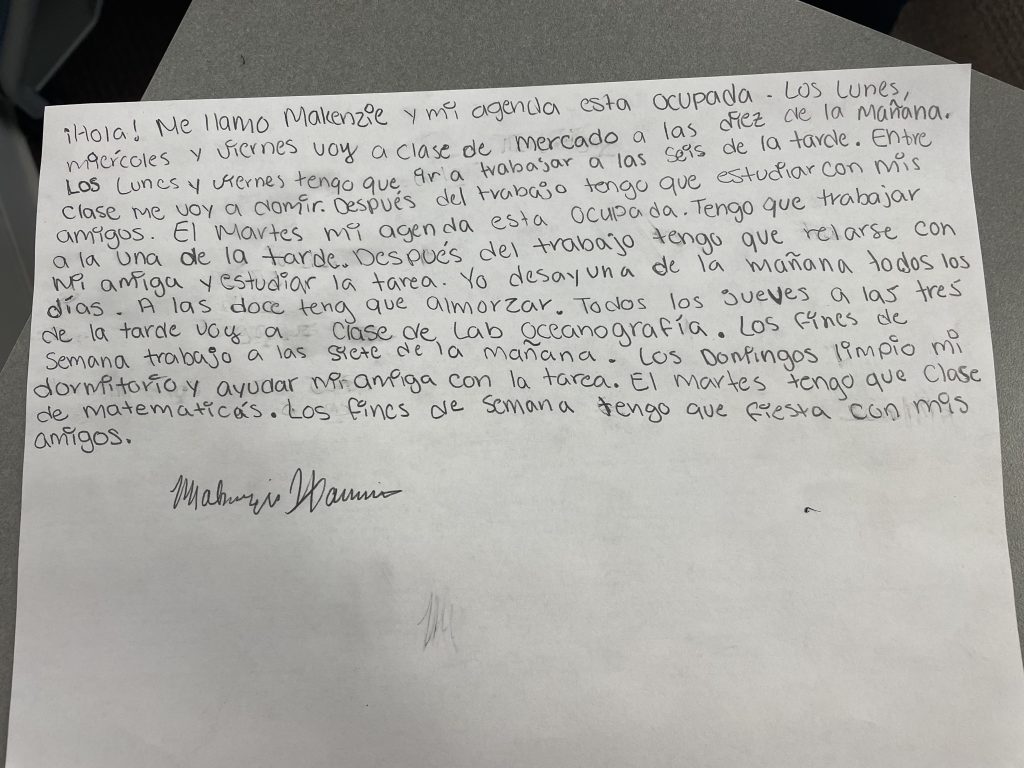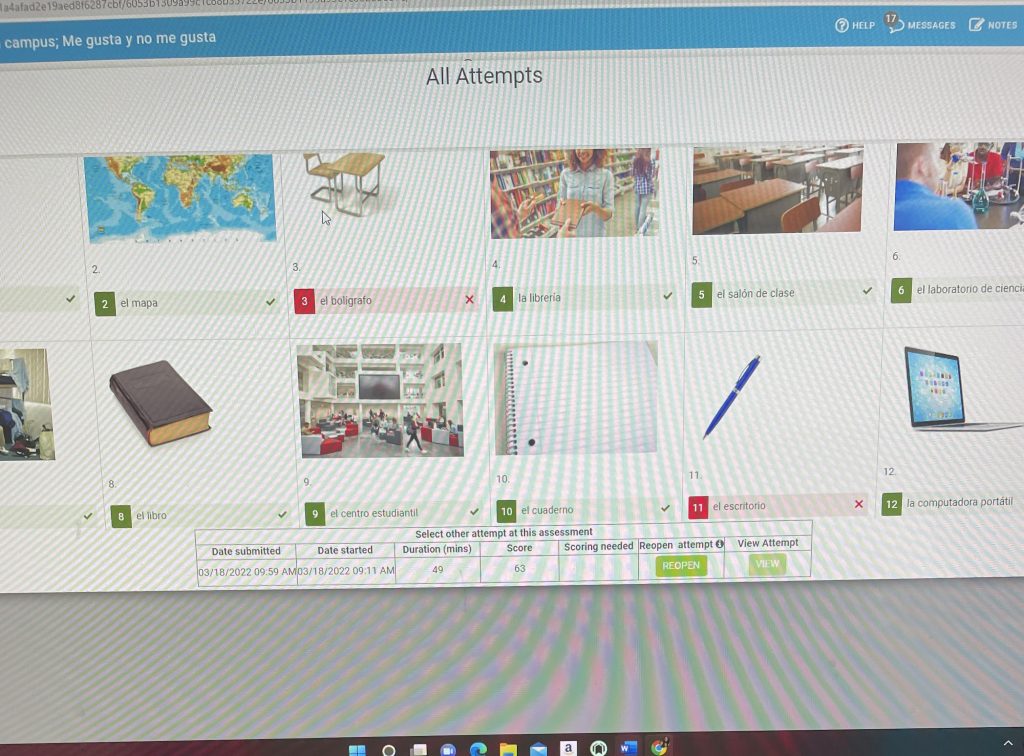Interpretive, Interpersonal, and presentational Modes of Communication
Chapter 5 was probably to most time I had to speak a lot more about what I like or dislike and who I admire. In chapter 5 our professor had us create a video listing three of our favorite places around our huge campus. We had to say things like ” Hola me llamo Makenzie, me gusta un Universidad.” Mi Universidad es muy grande y bonita. Most of my challenges would have to be my verbs. My professor kept explaining to me about adding more verbs and using the verb “Estoy” in the correct conjugation when needed. Also, there were other in-class assignments that we did as a class, for example, our professor wanted all of us to write her our calendars, and pretty much explain what we do in our daily lives.

Mainly what I did to overcome more of my weaknesses was I always write different vocabulary words in my notebook and study every day. Sometimes in order to help my Spanish, I would listen to Spanish music in order to recognize any new words that I did not understand or knew.
In chapter 4-Vocabulario: La Vida en el campus there was an exercise where we had to match the vocabulary with the items that are within a university. In my previous experience with Spanish, I did not struggle with this section, although I did make some minor mistakes. When learning a new language I understand that I will always make mistakes, but if I keep practicing then it will all make sense

Escuchar 4-1¿Qué significan? Watch these clips of people using nonverbal communication. Then drag the appropriate description to each clip to indicate what message each one conveys.
TIP: Instead of dragging you may also click on the word in the bank and then click on the space it belongs in. Put responses in the correct input to answer the question. Select a response, navigate to the desired input and insert the response. Responses can be selected and inserted using the space bar, enter key, left mouse button, or touchpad. Responses can also be moved by dragging with a mouse.

“Huh? I don’t understand.”1

“Look over there.”2

“I have an idea.”3

4

5

Escuchar 4-2 ¿Cuánto entiendes? You’d be surprised how much you can understand a conversation without even hearing any words. Watch these silent video clips and drag the correct caption to each clip, based on the actions taking place.
TIP: Instead of dragging you may also click on the word in the bank and then click on the space it belongs in. Put responses in the correct input to answer the question. Select a response, navigate to the desired input and insert the response. Responses can be selected and inserted using the space bar, enter key, left mouse button, or touchpad. Responses can also be moved by dragging with a mouse.
Exploring Culture
I think the one thing that helped me to understand cultural perspectives was learning how the Spanish-speaking community congregates their verbs in order to determine if masculine or feminine. For example “soy simpatico” (feminine) or “soy simpatico” (masculine). In chapter 3 I had to choose a Spanish-speaking country or a country where there are Spanish speakers, and pretty much had to compare whatever country I chose what they do thorough life versus America.
Exploración 3-4 Búsqueda en internet. Now it’s your turn to explore the status of the siesta and the workday throughout the Spanish-speaking world.
Paso 1. Select a country or region you would like to research, including Spanish-speaking communities in the United States and Puerto Rico, which is a U.S. territory where both Spanish and English are spoken. Using the Boolean search strategies, along with other strategies you’ve learned, find the following information about the country or region.
- What is the typical workday in that country or region?
- Is the siesta common in that country or region?
- Have these tendencies changed in recent years? If so, why?

Paso 2. Create a summary of what you learned about your country or region.